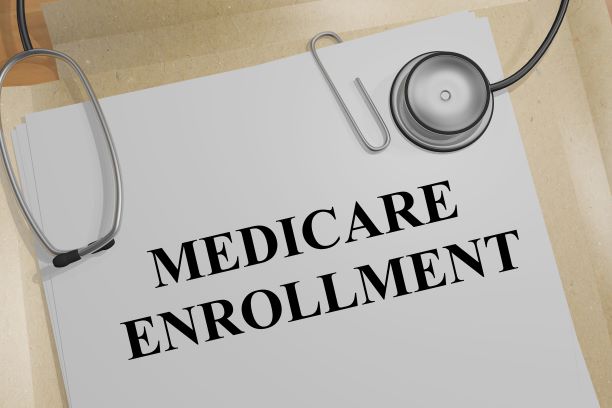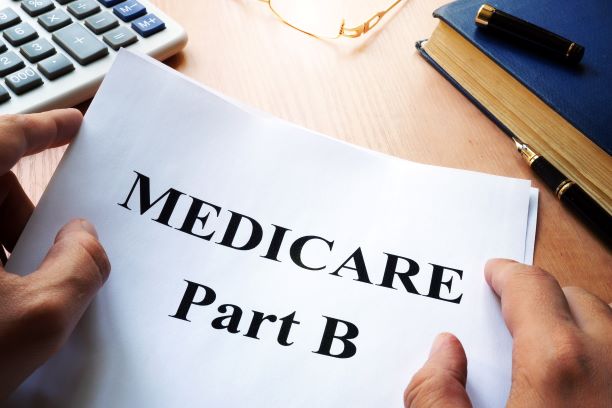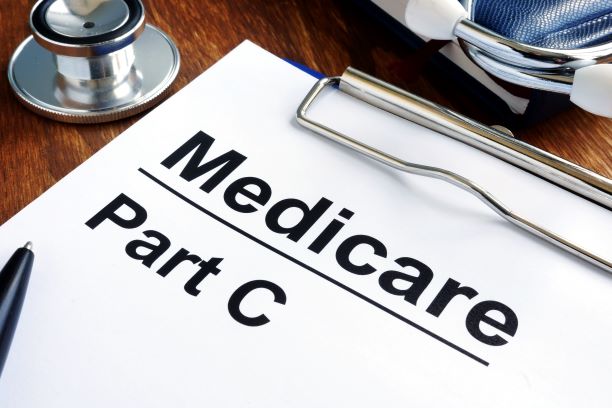Table of Contents
As the health of our nation continues to decline, healthcare expenditures continue to skyrocket. According to the National Health Expend Data Factsheet (LINK), National Health Expenditures (NHE) grew by 4.6% in 2018 totaling $3.6 trillion and accounted for 17.7% of the Gross Domestic Product (GDP).
In addition, Medicare spending grew by 6.4% totaling $750.2 billion in 2018, and accounted for 21% of the GDP.
This increase in health spending is likely due to an increase in the elderly population, and an increase in diseases related to metabolic syndrome which account for 75% of the National Healthcare Expenditures.
Metabolic Syndrome is a cluster of conditions that increase an individual’s risk for heart attack, stroke, and diabetes. These conditions occur together and include:
- Obesity (increase body fat around the waist)
- High blood sugar (insulin resistance)
- High blood pressure
- High cholesterol
According to Dr. Robert Lustig (LINK), who is a neuroendocrinologist, there are (3) drivers of metabolic syndrome.
- Obesity (subcutaneous fat)
- Diet (hepatic fat)
- Stress (visceral fat)
Research (LINK) shows that metabolic syndrome is particularly high in older adults above 60 years old. This could lead to increasing healthcare expenditures, particularly for the elderly, if this issue does not improve.
Property of rehaballey.com
This is why it is important for the elderly to know their healthcare coverage options and the changes that healthcare will bring in the near future.
In this blog, I will be providing a brief overview of Medicare, Medicare parts, enrollment processes, costs, and the future of Medicare. So, without further ado, let’s begin!
What is Medicare?
Medicare is a federally provided health insurance program for people who are (LINK):
- 65 years of age or older
- Younger people who are eligible due to certain disabilities
- People who have End-Stage Renal Disease (ESRD), that require dialysis and/or kidney transplant.
NOTE: It is important to note that specific Medicare coverage will depend both on federal law, as well as the state laws in your area.
Enrolling in Medicare

Most people who are eligible to receive Medicare are automatically enrolled in the program. Meaning, these individuals will be receiving Medicare Parts A & B without having to sign-up at all.
Property of rehaballey.com
Automatic enrollment will typically begin the first day of the month that you turn 65 years of age. The automatic enrollment process depends on whether you are currently receiving Social Security Benefits. Individuals who will be automatically enrolled in Medicare Parts A &B include (LINK):
- Individuals receiving Social Security or the Railroad Retirement Board (RRB) at least 4 months before turning 65 years of age
- Individuals under 65 years of age, with certain disabilities who:
- Received Social Security Disability for 24 months
- Received certain disability benefits from the RRB for 24 months
- Individuals with Amyotropic Lateral Sclerosis (ALS or Lou Gehrig’s Disease) on the month that their disability begins.
People who will need to sign-up for Medicare include:
- Individuals who are NOT receiving Social Security or the Railroad Retirement Board (RRB) at least 4 months before turning 65 years of age
- Individuals who have ESRD, sign-up for Medicare is optional.
- Individuals (or spouses) who are still working for an employer with less than 20 employees.
- Individuals (or spouses) who are still working, but who are not enrolled in a group health plan
If you are an individual who will need to sign-up for benefits, it is VERY IMPORTANT to sign-up for Medicare Parts A & B when you first become eligible to receive Medicare. The initial enrollment period lasts 7 months and (LINK):
- Begins 3 months before you turn 65
- Includes the month you turn 65
- Ends 3 months after you turn 65
During the process of signing up, you may be eligible to receive PREMIUM-FREE Medicare Part A. The eligibility requirements for PREMIUM-FREE Medicare Part A will be discussed in the next sections.
General (Late) Enrollment Process
General Enrollment for Medicare Parts A & B begins on January 1 and lasts until March 31 of each year. The general enrollment for Medicare Parts A & B are for individuals who DID NOT sign-up when they were first eligible, and those who are not eligible for the Special Enrollment Period (LINK).
Due to the late enrollment, Medicare coverage will not start until July 1 of that year.
NOTE: Failure to sign-up for Medicare Parts A & B when you are first eligible will result in an additional 10% increase in premiums for Medicare Part B.
Each year (12 month period), that you did not sign-up for Medicare; premiums will increase by an additional 10%. This increase will have to be paid every month for as long as you have Medicare Part B.
If you are NOT eligible for PREMIUM-FREE Medicare Part A, you will also incur a 10% lifetime increase in Medicare Part A premiums.
Property of rehaballey.com
Failure to sign-up for Medicare Parts A & B when you are first eligible, will also result in a gap in healthcare coverage. As previously stated, Medicare benefits will not start until July 1 of that year.
Special Enrollment Period (SEP)
Some individuals may qualify to postpone or delay their Medicare coverage, penalty-free if certain conditions apply. If qualified, you will be eligible to participate in the Special Enrollment Period (SEP), which allows you to be able to sign-up for Medicare on a future date. Individuals who qualify for (SEP) include (LINK):
- Those who are 65 or older, (or under 65 with a disability) and work for an employer that has 20 or more employees AND
- Those who are enrolled in a group health plan through the employer OR
- Your spouse is enrolled/has you covered in a group health plan, and works for an employer that has 20 or more employees OR
- Your family member (if you’re disabled) is enrolled/has you covered in a group health plan and works for an employer with 20 or more employees.
If you or your spouse, or family member (if you’re disabled) works for an employer with less than 20 employees, then you will have to sign-up for Medicare Parts A & B when you first become eligible.
If you are one of the lucky ones who qualify for the Special Enrollment Period, then nothing else needs to be done as long as the above conditions continue to be met.
Once you or your spouse retires or loses your group health plan coverage, then you have 8 months to sign-up for Medicare Part A and/or Part B beginning (LINK):
- The month after you (or your spouses) employment ends OR
- The month after you (or your spouses) employer-based group health plan ends.
You may be eligible for a (SEP) if you or your spouse has a Health Savings Account (HSA) with a High-Deductible Health Plan. I
t is important to note, however, that you must stop contributing to your HSA at least 6 months before signing up for Medicare or you will have to pay a tax penalty.
Medicare Parts & Costs
Now, that you have a brief overview of Medicare and how to sign-up, I would like to summarize the main Medicare Parts and Plans.
Medicare Part A: (Hospital Insurance)

Medicare Part A is hospital insurance that covers:
- hospital inpatient stays ordered by a physician
- Must be admitted in a hospital that takes Medicare
- Will include medically necessary tests and procedures that are performed while being admitted inside of a hospital
- Some Home Health Care (LINK)
- Long-Term Care Hospitals (LINK)
- Skilled Nursing Facilities
It is important to note that Medicare does NOT cover:
- Custodial care
- Care giving services
- Housekeeping services
- Food delivery services
Most individuals who sign-up for Medicare A will qualify for the PREMIUM-FREE Part A. This depends on the amount of Medicare taxes you/or your spouse paid while working. Individuals who qualify for PREMIUM-FREE Medicare Part A include (LINK):
- Individuals who receive Social Security Benefits or the Railroad Retirement Board (RRB)
- Individuals who are eligible to receive Social Security Benefits or Railroad Benefits
- You or your spouse participated in a Medicare-covered government employment.
- Individuals who are under the age of 65, and received Social Security or Railroad benefits for 24 months
- Individuals who have (ESRD) and meet certain requirements
Those who do not qualify for PREMIUM-FREE Medicare Part A will pay certain premiums each month for Medicare Part A. This will depend on the amount of time that Medicare taxes were paid while you were employed (LINK):
- Less than 30 quarters Medicare taxes paid = $458 each month
- Between 30-39 quarters Medicare taxes paid = $252 each month.
Medicare Part A Costs and Deductible
Everyone that receives Medicare Part A will have to pay an initial out-of-pocket cost (or deductible) when hospital care is needed. Once the deductible is met, some individuals may also have to pay a coinsurance. Specific payments include (LINK):
- $1,408 deductible for each benefit period
- Day 1-60 (hospital stay): $0 coinsurance
- Day 61-90 (hospital stay): $352 coinsurance per day
- Day 91 and beyond: $704 coinsurance per “lifetime reserve day”
- Beyond “lifetime reserve day” the patient will incur ALL hospital costs.
NOTE: A “lifetime reserve day” is the number of days that Medicare will allow additional days in the hospital if needed, and still cover partial services.
Patients will start to use their “lifetime reserve days” after 90 days spent in the hospital during the benefit period. Under Medicare Part A, individuals will only receive 60 days of “lifetime reserve days” over the course of their life.
Medicare Part B: (Medical Insurance)

Medicare Part B is insurance that covers services outside of a hospital setting. Some people typically look at these services as being non-emergency services such as (LINK):
- Doctor visits
- Preventive care
- Outpatient care
- Medical supplies- such as DME
- Ambulance services (LINK)
- Clinical research
- Limited outpatient prescription drugs
These services must still be medically necessary to treat, prevent, or diagnose any illnesses, or early-stage disease.
Medicare Part B Costs & Deductible
As per the date of this blog, everyone with Medicare Part B with pay a premium each month.
Most people will pay the standard premium which is $144.60. However, this is based on your tax return and depends on what your gross adjusted income was (2) years ago.
To see an example of what you would pay in premiums for Medicare Part B, based on your modified gross adjusted income, click HERE.
Property of rehaballey.com
In addition, the deductible amount for Medicare Part B insurance is $198. Once the deductible is met, individuals will typically pay a 20% coinsurance for their services.
Medicare Part C: (Medicare Advantage Plans)

The Medicare Advantage Plan is usually referred to as Medicare Part C. This refers to how your Medicare gets bundled. There are (2) ways that individuals can choose to receive their Medicare (LINK):
- Original Medicare
- Medicare Advantage
Original Medicare, as previously stated, is Medicare Part A, Medicare Part B, and Medicare Part D (drug prescription coverage).
Medicare Advantage (bundles) Medicare Part A, B, and typically part D, and puts it all in (1) convenient plan. These plans are still apart of Medicare, but they are offered by private companies.
These companies can charge different out-of-pocket cost, therefore it is important to compare plans to see what best fits your budget and needs. Individuals with a Medicare Advantage Plan will also need to pay a monthly premium.
Some advantages to the Medicare Advantage Plan includes:
- Bundles Medicare Part A, B, and D in (1) convenient plan
- May pay less out-of-pocket costs
- May offer extra benefits such as vision, dental, hearing, and more (LINK)
NOTE: It is important to note that Medigap, (Medicare Supplement Insurance), can not be used in conjunction with Medicare Advantage Plans.
In other words, Medigap can only be used with Original Medicare Plans.
NOTE: Most people with End-Stage Renal Disease (ESRD) do NOT qualify to enroll in Medicare Advantage Plans, although there are some exceptions.
Medicare Part D: (Prescription Drug Coverage)

Medicare Part D or (Prescription Drug Coverage) is the part of Medicare that helps to cover prescription drugs including vaccinations.
Most people with a Medicare Advantage Plan will likely have this option bundled into their plan, and will not have to purchase Part D separately.
Those, however, who decide to go with Original Medicare, will have to also purchase Medicare Part D, separately if desired.
Although purchasing Medicare Part D is optional, those who decide to purchase this plan will still need to sign-up when they are first eligible.
Failure to do so (like Medicare Parts A & B) will result in a late enrollment penalty for the duration of your coverage. Click HERE for more information on how to sign-up for prescription drug coverage.
Property of rehaballey.com
Like Medicare Parts A & B, the late enrollment penalty for Medicare Part D will depend on how long you went without coverage after you were first eligible.
Click HERE for examples, and to see how Medicare Part D late enrollment penalties are calculated.
Cost of Medicare Part D (Prescription Drug Coverage)
The cost of your prescription drugs will depend on (LINK):
- The plan that you choose
- The drugs that you choose
- Whether you qualify for Extra Help (a program to help those with limited income, pay for the cost for prescription drugs)
- Whether you go to a pharmacy in-network
- Whether the drugs you use are in your plan’s formulary
After signing up for Medicare Part D, individuals can expect to have the following associated costs (LINK):
- Premium
- Yearly Deductible
- Payment for co-pays, co-insurance
- Payments for Extra Help if needed
- Late enrollment penalty cost (if enrolled late)
- Coverage gap costs
NOTE: A coverage gap places a limit on how much the plan will pay. After you and your plan pay $4,020 on covered drugs, then you will enter a coverage gap.
After entering a coverage gap, the plan will now pay a limited amount for your drugs ie: only 5%, you will pay 25% for brand name drugs, and the drug manufacturer will pay the rest.
NOTE: Individuals, who qualify for the Extra Help program, will not have a coverage gap.
Medigap and Supplemental Medicare Insurance

Medigap is Medicare Supplement Insurance sold by private companies that help to cover much of the out-of-pocket expenses still left by the Original Medicare Insurance such as (LINK):
- Co-pays
- Deductibles
- Co-insurance
In some cases, Medigap may also be used for travel outside of the United States. As mentioned earlier, Medigap can NOT be used if you have a Medicare Advantage Plan. Click HERE for more information about Medigap Supplemental Medicare Insurance.
Changes to Medicare

As of 2021, President Trump has proposed a budget that will reduce Medicare spending by 7% between the years 2021 and 2030 (LINK). Unsurprisingly, several changes will come as a result of the decrease in Medicare spending which includes:
- Reduced reimbursement rates to providers
- Expansion of telehealth providers for Medicare Advantage Plans
- Allowing patients to see nurse practitioners as their primary physicians
As mentioned above, patients with Medicare Advantage Plans will see increased access to telehealth providers. Specialties may include (LINK):
- Dermatologist
- Gynecologist
- Primary Care Physicians/Practitioners
- Endocrinologist
- Psychiatry
- Cardiologist
In addition, this plan expands coverages for patients with End-Stage Renal Disease (ESRD), and those patients will be eligible to sign-up for the Medicare Advantage Plan starting in 2021.
The coming changes to Medicare will also include some drug reduction costs. According to the White House, 3 million Americans on Medicare currently rely on insulin for their diabetes.
President Trump’s “comprehensive drug pricing reform”, is set to reduce the federal deficit by $135 billion within the next 10 years (LINK).
That means that starting in the year 2021, patients with diabetes who enroll in Medicare will have a cap on how much they pay for their insulin. Copays will not cost more than $35 each month (LINK).
Property of rehaballey.com
However, there will be changes to the physician fee schedule for Medicare Part B (medical insurance), which means that physicians will see payment cuts up to 8%, as well as payment cuts to psychologists, physical therapists, and social workers (LINK).
In addition, some patients may lose access to some doctors as a result of these cuts. Also, expect some physician offices to stop taking Medicare recipients altogether.
As our environment continues to change, it is going to be more important than ever before to remain knowledgeable about the options that are available to you.
Hopefully, this article gives you and your loved ones a better understanding of your options under Medicare.
If you would like to know other ways to help reduce your healthcare out-of-pocket cost, then you can read my blog titled 6 Alternatives to Traditional Health Insurance (LINK). GOD BLESS YOUR ENDEAVORS!!
Resources
- https://www.cms.gov/Research-Statistics-Data-and-Systems/Statistics-Trends-and-Reports/NationalHealthExpendData/NHE-Fact-Sheet
- https://robertlustig.com/
- https://www.ncbi.nlm.nih.gov/pmc/articles/PMC3987322/
- https://www.medicarefaq.com/faqs/changes-medicare-in-2021/
- https://www.medicarefaq.com/blog/trump-reduces-insulin-costs/
- medicare.gov





